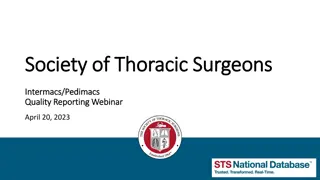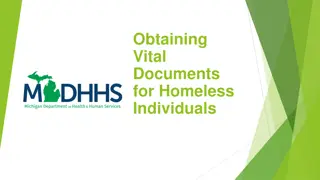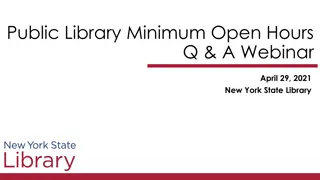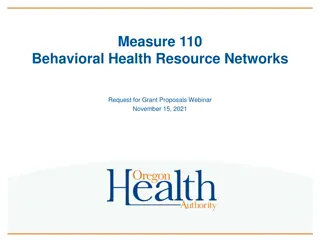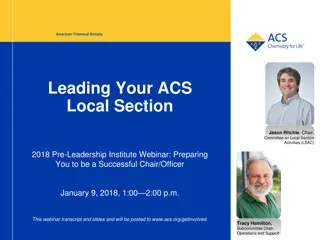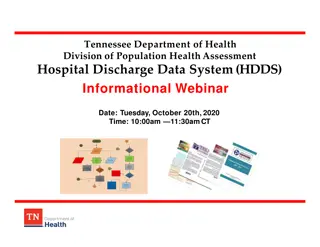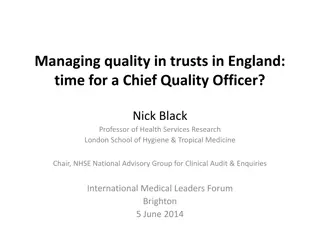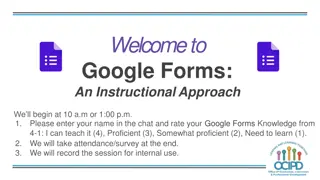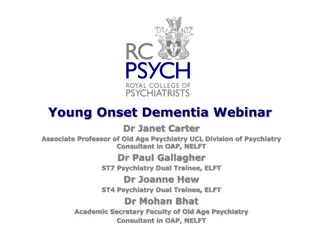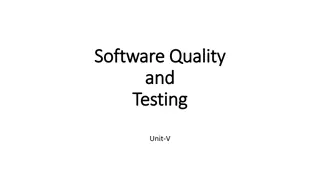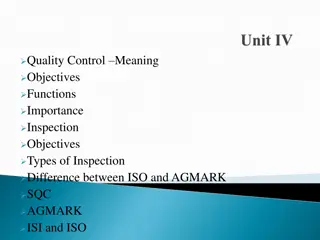Enhancing Quality of Life for Individuals with No Adrenals: Insights from GoodHormoneHealth Webinar
Discover key insights on managing life without adrenals, including discussions on adrenal hormones, optimal replacement strategies, necessary tests, stress dosing, and more. Explore the roles of the adrenal glands, hormones such as cortisol and aldosterone, and the Renin-Angiotensin-Aldosterone Axis. Learn about different types of glucocorticoid insufficiency and how to address them effectively. Presented by Patient Melissa, this webinar offers valuable information and a Q&A session.
Download Presentation

Please find below an Image/Link to download the presentation.
The content on the website is provided AS IS for your information and personal use only. It may not be sold, licensed, or shared on other websites without obtaining consent from the author. Download presentation by click this link. If you encounter any issues during the download, it is possible that the publisher has removed the file from their server.
E N D
Presentation Transcript
How to improve quality of life for those with no adrenals (BLA and Addison s) GoodHormoneHealth Webinar May 17, 2020 All patients will be muted, but if you are unmuted, please mute your phone
Thanks to Melissa For suggesting the topic Providing questions Publicity
What we will discuss tonight Adrenal hormones and physiology Who should get an adrenalectomy? How do you optimally replace adrenal hormones? What laboratory tests are needed to monitor replacement? When and how do you stress dose? What about subcut cortisol versus cortisol pumps? Patient Melissa will lead a Q and A
Adrenal Glands The adrenal glands lie at the superior pole of each kidney. They are composed of two distinct regions: the cortex and the medulla.
Adrenal Hormones Glucocorticoids-Cortisol Mineralocorticoids-Aldosterone Androgens-DHEA(S), testosterone, androstenedione Estrogens Catecholamines-Epinephrine, Dopamine
Cortisol Daily secretion 10-15 mg Circadian cycle (highest at 8 am) Has three forms: Free (5%), physiologically active bound to CBG/albumin Cortisol metabolites
Cortisol (glucocorticoid): Brain-Hypothalamic- Pituitary-Adrenal Axis
Renin-Angiotensin-Aldosterone (Mineralocorticoid) Axis Site Angiotensinogen (452 A.A.) Liver Kidney Prorenin Renin Angiotensin I (10 A.A.) Angiotensin- converting enzyme Lung, Plasma Angiotensin II (8 A.A.) Adrenal, Vascular Angiotensin II receptor Aldosterone Adrenal
Different Types of Glucocorticoid Insufficiency Primary Adrenal Insufficiency Glucocorticoid and Mineralocorticoid Insufficiency Compensatory Increase in POMC (hyperpigmentation) Bilateral Adrenalectomy Secondary (Central) Adrenal Insufficiency Glucocorticoid Insufficiency Only Glucocorticoid Withdrawal Glucocorticoid Insufficiency Only
Symptoms of Glucocorticoid Insufficiency GI issues (most common and most GI issues in adrenal insufficiency patients are due to cortisol problems, not GI problems) Fatigue Vomiting Diarrhea Anorexia Malaise Muscle and joint pain Abdominal pain Weight loss Hypoglycemia Hyponatremia (SIADH)
Symptoms of Mineralocorticoid Insufficiency Decreased intracellular volume Tachycardia, palpitations (most palpitations are due to fludrocortisone/HC issues and not GI issues Hypotension Dehydration Shock Hyponatremia Hyperkalemia Arrhythmias Acidosis Salt-craving
Laboratory Findings of Primary Adrenal Insufficiency Hyponatremia Hyperkalemia Hypoglycemia Lymphocytosis Eosinophilia Mild normochromic Anemia
Treatment for Cushings Disease Pituitary surgery-transphenoidal surgery (TSS) Medical treatment Repeat Pituitary Surgery Bilateral Adrenalectomy (BLA) Radiation Therapy-takes a long time to work and may give memory problems
Medical Treatment for Cushings Disease Ketoconazole-In my opinion, the best Korlym (RU486)-can get adrenal insufficiency and hard to monitor or correct adrenal insufficiency Cabergoline-sporadic effects Pasireotide-somatostatin analog-GI side effects, diarrhea, diabetes Isturisa which blocks 11-beta-hydroxylase enzymes and is similar to metyrapone.
Who should get a BLA? Failed initial pituitary surgery No target for additional surgeries Want more definitive treatment than medical treatment Decreased cure rates with more pituitary surgery Pituitary damage with fertility implications with further pituitary treatment vs BLA Pituitary hyperplasia-harder to cure if pathology shows hyperplasia
Pluses and Minuses of BLA Plus-cures right away Minus-more difficult surgery than pituitary My new series: about 10% get adrenal remnant tissue formation with recurrence Nelson s syndrome-pituitary overgrowth with increased ACTH secretion I haven t seen it, but recommend followup pituitary MRIs On glucocorticoids (HC) and mineralocorticoids (fludrocortisone) for the rest of your life. More likely to get adrenal insufficiency/adrenal crisis than following pituitary surgery.
Adrenal Remnant Formation If adrenal tissue is confined to the adrenal bed, it is considered adrenal remnant tissue, while if it is outside the adrenal bed, it is considered adrenal rest tissue.
Adrenal Remnant Formation Wilson et al, submitted to Hormone and Metabolic Research Ten of 51 patients who underwent BLA had adrenal remnant/rest tissue marked by detectable endogenous glucocorticoid production 9 of the 10 patients had signs and symptoms of hypercortisolism. Localization and treatment proved difficult. The first indication of remnant tissue occurrence is a reduction in glucocorticoid replacement with symptoms of hypercortisolism. If this occurs, endogenous cortisol production should be tested for by cortisol measurements using a highly specific cortisol assay while the patient is taking dexamethasone or no glucocorticoid replacement.
BLA Surgery and Hospitalization Most cases can be done laparoscopically through a retroperitoneal approach Very obese patients may need to be done with open surgery Hospitalized about 5 days Surgery can give IV hydrocortisone after surgery usually start on postop day 2 I usually have patients discharged on 30-50 mg po hydrocortisone and 0.1 mg twice a day fludrocortisone High doses of steroids prevent wound healing and are not necessary
Postop BLA Monitoring I get a day 7 DHEAS to show adrenals are completely removed and electrolytes I get a day 22ish ACTH, renin and 24 hr urine on HC ACTH should be between 100 and 1000 in patients on proper glucocorticoid replacement Plasms renin activity is the most important test for BLA (and Addison s patients and guides fludrocortisone dosing
Adrenal Insufficiency Treatment Proper replacement is key to good quality of life Both too much and too little is bad HC and fludrocortisone
Quality of Life In a postal survey of patients with primary adrenal failure from Norway, the SF 36 was used to assess subjective health status. Seventy-nine out of 97 patients (81%) responded. General health and vitality perception were most consistently impaired in the patients with Addison s disease. Scores for fatigue (both physical and mental) were also higher than normal (i.e. more fatigue). 24% of patients in the 18 67 years age range and 41% of patients in the 40 67 years age range were out of work and receiving disability benefit, compared to 10% and 17%, respectively, in the general population.
Daily cortisol production rate in man Esteban et al. (JCEM, 72: 39, 1991) measured daily cortisol production rates in normal volunteers with a stable cortisol isotope method. 10 mg a day Not all of oral cortisol is absorbed, need to take 12-15 mg/day Most glucocorticoid replacement is supraphysiological. Leads to osteoporosis, glucose intolerance and increased infections. True physiological replacement is likely to be benign Main problem is malabsorption (cortisol is needed for adsorption, so it can be a vicious cycle)
Physiological Equivalents of Glucocorticoids 20 mg of hydrocortisone (shortest acting) 15 mg of iv or subcut solucortef 4-5 mg of prednisone (longer acting) 4 mg of methylprednisolone (longer acting) 0.75 mg of dexamethasone (liquid dexamethasone 0.5 mg/ 5 mL) (longer acting, no mineralocorticoid activity) Each of these can be used and may be better in some patients
Types of Glucocorticoids I start with hydrocortisone and use it 90% of my patients Can monitor with UFC/17OHS, salivary cortisol day curves, can t with others I try the others next Prednisone Methylprednisolone (Medrol) Liquid dexamethasone Sometimes combinations Try to adjust when patient is feeling low vs high
Glucocorticoid Replacement Most patients are over-treated Earliest manifestation of excess treatment is easy bruisability Weight gain, central obesity, etc. Earliest manifestation of inadequate treatment is joint pain, nausea, abdominal pain. Reasonable to mimic circadian rhythm with most of cortisol given first thing in the morning But patients often go through cortisol and need doses throughout the day Want to avoid large doses at night as it could lead to sleep disturbances, But, some patients need a bit of cortisol to go into deep sleep No studies comparing different treatment regimens
Glucocorticoids are Needed for Sleep Garc a-Borreguero D. et al. (J Clin Endocrinol Metab. 2000 85:4201-6). In Addison's patients, cortisol plays a positive, permissive role in REM sleep regulation and may help to consolidate sleep. Suggests a need for a low dose of hydrocortisone (1.25- 2.5 mg) at night.
Glucocorticoid Replacement (2) My approach is to start with hydrocortisone mainly in AM- aim for dose between 15 and 20 mg/day in a women and slightly higher in a man. Hydrocortisone 10-15 mg on awakening Hydrocortisone 2.5-5 mg in mid-afternoon Hydrocortisone 1.25- 2.5 mg at bedtime Occasionally a 4th dose at about 5 pm is needed More physiological than prednisone or dexamethasone Decrease dose slowly until some symptoms develop, then go back a dose. Small changes make a big difference Increase dose with illness, short term its better to err on giving more, long term its better to give less
Glucocorticoid Replacement (3) Dosing is crucial, might be a different between brand and generic Cortef is brand name, hydrocortisone is generic (pharmacy can substitute different suppliers without telling patient or doctor) Greenstone is the best generic Other brands are CorePharma, Qualitest and West-ward Comes in 5, 10 and 20 mg pills Stick with a brand you like No evidence of shortages
Maintenance Therapy for Primary Adrenal Insufficiency Primary adrenal insufficiency may need a bit more glucocorticoids than secondary Mineralocorticoid Replacement Start with Fludrocortisone 0.05 mg to 0.5 mg daily (0.05 mg twice a day) Titrate based on renin levels Should be given twice a day-half-life is 3.5 hrs Fludrocortisone is generic; brand (Florinef) is not available) Probably will need more fludrocortisone in the summer Shortage late 2018 has passed Teva and Impax Med-Alert Bracelet Program your health tab in your phone Solu-cortef -100 mg in Act-O-vial
Monitoring glucocorticoid replacement Signs and symptoms 24 hr UFC over-estimate cortisol as it reflects amount in the urine right after dosing that exceeds 11b-HSD2 capacity. 17-OHS (mg/day) reflects cortisol metabolism and is more integrated throughout the day. Serum or salivary cortisol day curves under-estimate cortisol as the ignore cortisone-cortisol shuttle I don t use salivary cortisol day curves much, but they can give an idea if a certain of day is higher than it should be ACTH is high (100-1000) unless over-replaced If ACTH >1000, get a pituitary MRI to look for Nelson s
Monitoring mineralocorticoid replacement in primary adrenal insufficiency Plasma renin activity is very accurate and probably should be measured every 2-3 months Tube should be chilled and spun right away If its high, more fludrocortisone is given, if its low, less fludrocortisone is given Electrolytes are relatively insensitive and are not a substitute for frequent renin monitoring If high blood pressure and normal renin, do not stop fludrocortisone, but give a blood pressure pill Calcium channel blockers Amlodipine (Norvasc) or diltiazem (Cardiazem) Do not give ACE inhibitors (benazepril, lisinipril), ARBs (losartan), spironolactone or diuretics
Salt and licorice Use salt abundantly, especially if you are salt craving Can take more before exercise As long as you don t have heart problems or hypertension, probably can take as much salt as you want Licorice root inhibits the 11b-HSD enzyme allowing more cortisol to bind to the cortisol receptor in he kidney Might be a good way to get more mileage from your cortisol and fludrocortisone Licorice root from Nature s Way 450 mg twice a day
DHEA Only made by adrenal (0 if adrenalectomy) I recommend 25 mg a day May help with energy and immune system Too much DHEA Oily skin Oily hair Acne
Testosterone Half made by adrenals, half made by ovaries (regulated by the pituitary) Most patients with BLA and prior pituitary surgery are low Usually given by cream 2.5 mg/mL, 1 mL daily is a dose I often use May help with energy, muscle strength, libido Less side effects than DHEA Extra hair growth Acne
Typical Hormone Panel Every 2-3 months Renin-sitting is ok- chilled tube, spun immediately ACTH chilled tube, spun immediately DHEAS Electrolytes (maybe every 6 months) Bioavailable and total testosterone Pituitary hormones as needed IGF-1 Thyroid hormones (freeT4, freeT3, TSH, rT3) Gonadal hormones as needed (Estradiol) 24 hr UFC/17-OHS on replacement (every 6 months) No need to measure cortisol/do imaging (unless concerned about remnant tissue) Don t need to/can t measure dopamine, catecholamines
Can someone with adrenal insufficiency? Get a flu shot? Yes you should Get steroid injections (back problems)? yes but minimize duration Get oral steroids for asthma? yes but minimize duration Use steroid inhalers? Yes Use steroid creams? Yes Get the COVID-19 vaccine? Why not
COVID-19 and stress-dosing Concerned about getting COVID-19- definitely not Have COVID-19 or contact with patient with COVOD-19, but not sick (no fever, vomiting)- no stress dose With COVID-19, shortness of breath and sick-stress-dose and go to ER Endocrinologist statement and AACE guidelines- sick day rules for our known patients with primary and secondary adrenal insufficiency taking glucocorticoid replacement therapy. As it relates to COVID-19, any patient with a dry continuous cough and fever should immediately double their daily oral glucocorticoid dose and continue on this regimen until the fever has subsided. Some that are slightly sick, but not short of breath, can stress dose and stay home. Most of these patients should go to the hospital
COVID-19 and stress-dosing Make sure you drink fluids, take in salt. I would stress dose by doubling your hydrocortisone, not tripling as Dr. Findling recommended. See my quotes in Endocrine Today Download Dr. Friedman s adrenal crisis letter to bring to emergency rooms
Adrenal insufficiency and Immune system Patients with properly treated Addison s disease have an impaired immune response due to a T- cell problem (those with central adrenal insufficiency and adrenalectomy are probably not in this category). Adrenally insufficient patients undertreated may do slightly worse with infections such as COVID-19, but patients over-treated are likely to do much worse. So Adrenally insufficient patients should not stress-dose unless they are sick with COVID-19 or other infections.
Stress Dosing Okay for short-term, try to avoid creeping up on your dose Fever Vomiting Double glucocorticoid dose Severe stress could add an extra 5 mg Exercise, could add an extra 2.5-5 mg of HC and .05 mg of fludrocortisone before Some women need a a bit extra around their menses
Adrenal Crisis Usually in Patients with Primary Adrenal Insufficiency Precipitated by Stress (emotional or physical) Newly diagnosed vs. established patient Stopped/ran out of medicines Illness (gastrointestinal and upper respiratory tract infections) vomiting
Adrenal Crisis-symptoms GI issues (nausea, vomiting, abdominal pain, diarrhea) Fatigue High or low blood pressure High pulse Weak Feel like passing out Poor circulation
Adrenal Crisis Know when its coming on Double dose first, if still AI, 100 mg of IM hydrocortisone Take extra fludrocortisone/extra fluid and salt Go to ER (bring crisis letter), but be prepared to wait You may have to guide the ER doctor
Steroid coverage for illnesses or surgery Moderate illness 50 mg of hydrocortisone twice a day Severe illnesses 100 mg of IV hydrocortisone Q 8 hours Minor procedures without anesthesia No extra coverage Colonoscopy: double oral HC and fludrocortisone day before and day of procedure Moderately stressful procedures (endoscopy or arteriography Single 100 mg IV dose of hydrocortisone prior to procedure Major surgery 100 mg of IV hydrocortisone before anesthesia and Q 8 hours Next day double your dose
Subcutaneous Cortisol Useful in patients with gastro-intestinal issues that can t absorb hydrocortisone Uses solu-cortef in 100 mg Act-o-vial (reconstitute in 2 mL, so its 50 mg/mL) Solu-cortef powder-can reconstitute in 1 mL so it is 100 mg/mL-may make it easier to calculate Solu-cortef in 500 and 1000 mg vial may be available Dose 3-4 times a day similar to oral HC May be able to cut down the dose slightly I am recommending patients to try subcutaneous cortisol before pumps
Glucocorticoid Pump JCEM Volume 99 Issue 5 - May 2014 Continuous Subcutaneous Hydrocortisone Infusion versus Oral Hydrocortisone Replacement for Treatment of Addison's Disease: A Randomized Clinical Trial Marianne ksnes, Sigridur Bj rnsdottir, Magnus Isaksson, Paal Methlie, Siri Carlsen, Roy M. Nilsen, Jan-Erik Broman, Kai Triebner, Olle K mpe, Anna- Lena Hulting, Sophie Bensing, Eystein S. Husebye, and Kristian L v s The objective of the study was to compare the effects of continuous sc hydrocortisone infusion (CSHI) with conventional oral hydrocortisone (OHC) replacement therapy.
Glucocorticoid Pump Results No significant differences between treatments in weight, waist to hip ratio, or BP were observed, although there was a tendency toward an increase in weight and body mass index (BMI) with CSHI Morning glucose levels increased with CSHI and were significantly higher on CSHI than on OHC No difference in sleep parameters
Glucocorticoid Pump Conclusions Pumps can be used safely High ACTH may be detrimental and is due to pause in cortisol replacement over night Less fatigue but some weight gain with pump. I have heard of patients getting infections Some patients get abdominal welts I would reserve the pump to those who failed oral HC and at least one other steroid preparations I would recommend subcutaneous solu-cortef first





